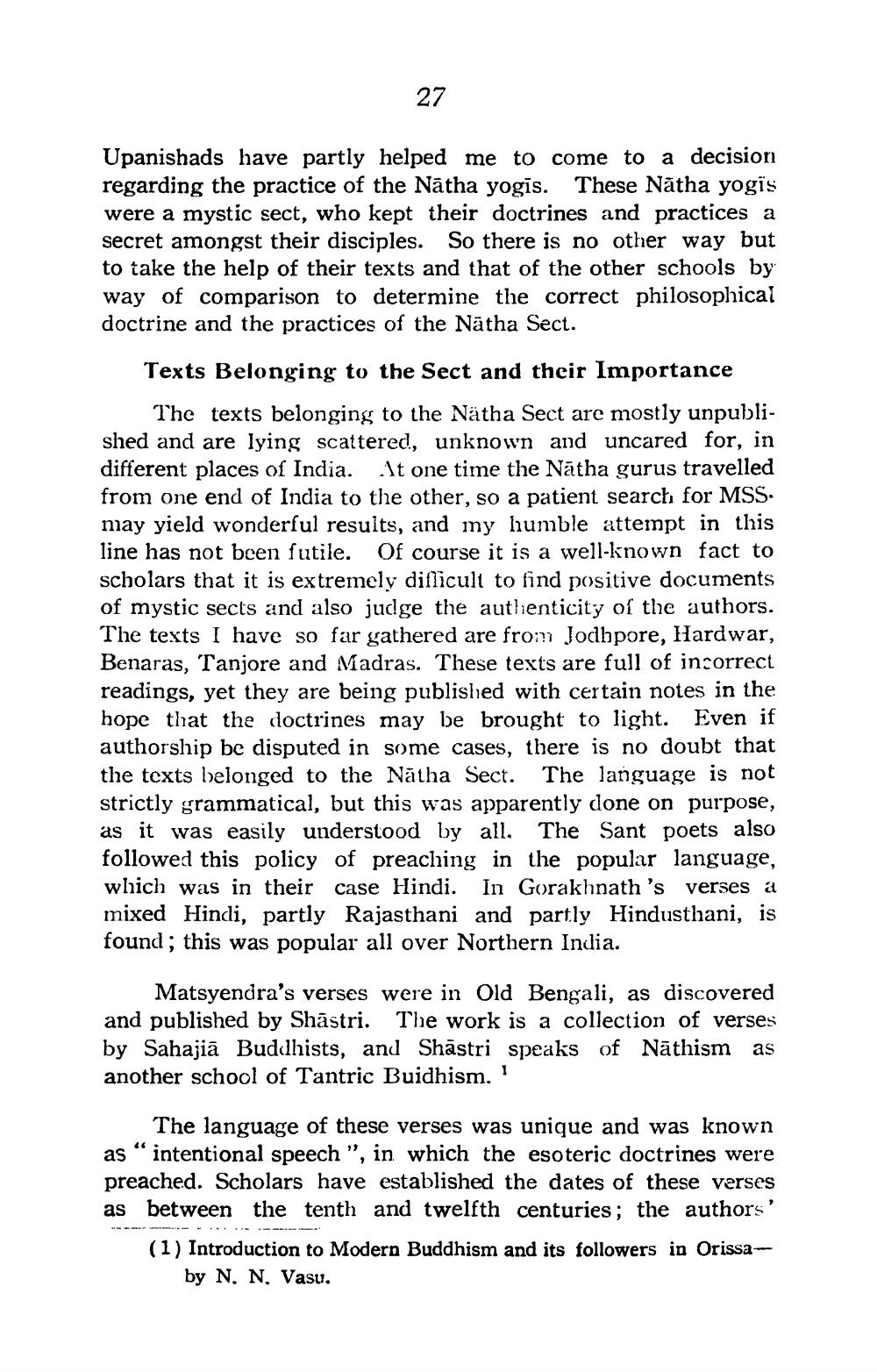________________
27
Upanishads have partly helped me to come to a decision regarding the practice of the Natha yogis. These Natha yogis were a mystic sect, who kept their doctrines and practices a secret amongst their disciples. So there is no other way but to take the help of their texts and that of the other schools by way of comparison to determine the correct philosophical doctrine and the practices of the Nätha Sect.
Texts Belonging to the Sect and their Importance
The texts belonging to the Nätha Sect are mostly unpublished and are lying scattered, unknown and uncared for, in different places of India. At one time the Nätha gurus travelled from one end of India to the other, so a patient search for MSS. may yield wonderful results, and my humble attempt in this line has not been futile. Of course it is a well-known fact to scholars that it is extremely difficult to find positive documents of mystic sects and also judge the authenticity of the authors. The texts I have so far gathered are from Jodhpore, Hardwar, Benaras, Tanjore and Madras. These texts are full of incorrect readings, yet they are being published with certain notes in the hope that the doctrines may be brought to light. Even if authorship be disputed in some cases, there is no doubt that the texts belonged to the Natha Sect. The language is not strictly grammatical, but this was apparently done on purpose, as it was easily understood by all. The Sant poets also followed this policy of preaching in the popular language, which was in their case Hindi. In Gorakhnath 's mixed Hindi, partly Rajasthani and partly Hindusthani, is found; this was popular all over Northern India.
verses a
Matsyendra's verses were in Old Bengali, as discovered and published by Shastri. The work is a collection of verses by Sahajia Buddhists, and Shastri speaks of Nathism as another school of Tantric Buidhism. '
The language of these verses was unique and was known as intentional speech ", in which the esoteric doctrines were preached. Scholars have established the dates of these verses as between the tenth and twelfth centuries; the authors'
46
(1) Introduction to Modern Buddhism and its followers in Orissaby N. N. Vasu.




